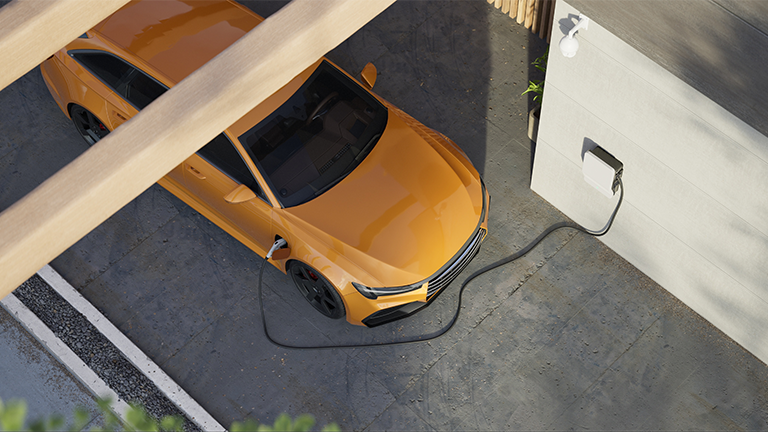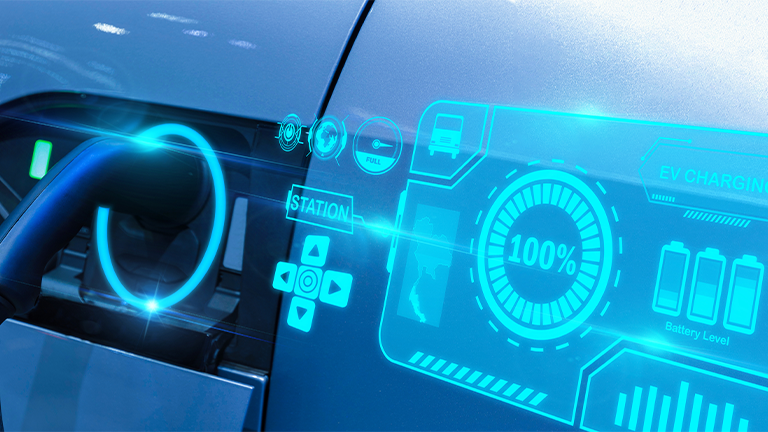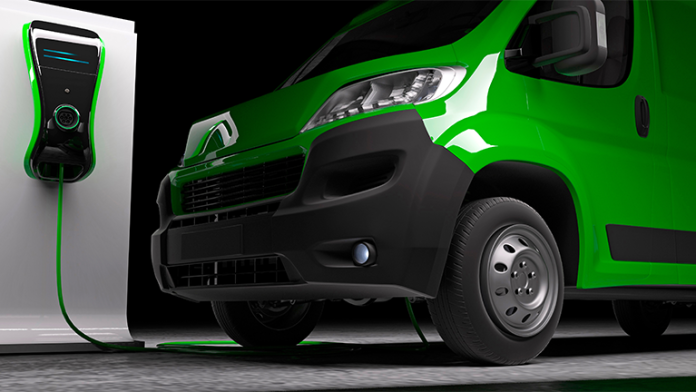Vehicle-to-grid (V2G) has been a well-known concept since the 1990s when electric vehicles (EVs) seemed poised to become mainstream. However, the electric car revolution was delayed, and V2G’s progress stalled before it even began. There simply weren’t enough EVs on the road.
It was only in the 2010s and 2020s that higher sales of EVs put V2G back in the game as a viable technology. With a growing proportion of our electricity being generated by renewables, the storage and grid-balancing capabilities offered by V2G are coming at just the right time to help utilities manage their increasingly complex systems.
Renewables are unpredictable, so we need a way to store excess energy generated when the wind blows and the sun shines. This enables the grid to have spare energy available to handle short-term peak demands without having to keep costly gas and coal power plants available for occasional use.
However, storing electricity is surprisingly difficult and expensive. Home storage batteries, such as Tesla’s Powerwall, would do the job, but they are a costly solution.
Instead, how about utilizing all the batteries already sitting in our driveways?
Vehicles as energy stores
Using an EV battery to provide electricity to the grid may seem obvious, but it requires the right technology–specifically, the provision of bi-directional charging capability in both the charger and the car.
To ensure interoperability across multiple vendors, the ISO 15118 standard for communication between EVs and charging stations includes specifications for bi-directional charging. Currently, only EVs built to the CHAdeMO charging standard (developed by Japanese carmakers) can handle bi-directional charging, although efforts are underway to add this capability to other standards such as Combined Charging System (CCS).
While Avnet’s primary focus in this article is on V2G, there is also ongoing interest in vehicle-to-home (V2H) and vehicle-to-load (V2L), often collectively referred to as V2X.
V2L enables a vehicle’s battery to power electric devices, such as power tools or lights. V2H allows an EV battery to be used to power the home, ensuring the lights stay on during a power outage or storing power from home solar cells for later household use.
The benefits of V2G
Charging your car or charging your home?

Electricity at night is typically much cheaper than during the day due to considerably lower demand. Charging EVs overnight can save car owners a significant amount of money.
Moreover, the reduced demand at night means that a larger proportion of the electricity used for charging comes from renewable sources, as opposed to fossil fuel power plants that may only be activated during peak times. This contributes to utilities’ efforts to lower carbon emissions.
In addition to assisting electricity suppliers in managing peak demands, the energy stored in EV batteries can also help them handle voltage and frequency fluctuations on the grid.
Given the unpredictable nature of renewables, instances of cheap electricity may arise with little notice, such as unexpected windy weather. The V2G system, including any consumer-facing applications, must be flexible enough to respond promptly. EV batteries are well-suited to serve as a nearly instant source of power, available more quickly than activating other power generators.
Commercial issues
While the technology challenges of V2G are well on the way to being solved, the barriers to its adoption are now primarily commercial. Adding bidirectional capabilities to an EV increases cost, and it remains to be seen if enough consumers can be persuaded that it’s worthwhile.
There is also an unresolved issue regarding who bears the cost for the new infrastructure needed for V2G, particularly the systems required to convert between the alternating current (AC) used in the grid and the direct current (DC) used to charge and discharge the EV battery at roadside fast chargers.
Power companies prefer using AC bidirectionally to facilitate the seamless addition of stored energy into their grids. However, automakers are concerned about the costs of adapting vehicle electronics to meet the demanding technical and safety standards of the grid.
Some consumers have expressed concerns that the additional charge/discharge cycles from V2G may accelerate the wear and tear on their EV’s battery, leading to additional costs. Additionally, there are concerns about the round-trip efficiency as AC electricity from the grid is rectified to DC, stored in the car’s battery, discharged from the battery, inverted back to AC again, and delivered back to the grid–with each step resulting in power losses. Charging stations for EVs typically use AC for residential and home chargers, while DC designs are increasingly common for fast chargers at roadside locations.
Governments may intervene to make bidirectional charging compulsory, as demonstrated by California’s proposed Senate Bill 233, which sets a deadline of 2027 for most new EVs and chargers sold in the state to support bidirectional charging. However, such a process may be slow and cumbersome.
System demands for V2G
EV charging presents a complex technical challenge that encompasses various aspects, including communications, security, user interface functions and power conversion. It requires the use of one or more microcontrollers (MCUs) that run physical layer (PHY) and application software. Communication standards utilized may include Wi-Fi, Bluetooth or cellular, with devices like NXP’s IW620 dual-band solution or its OL2385 RF transceiver for sub-GHz protocols.
Ensuring bidirectional charging necessitates robust security systems in both chargers and vehicles, encompassing confidentiality and authenticity. Hardware-based security solutions, such as NXP EdgeLock SE05x/A5000 secure element, offer easily integrated options for system designers. To handle the complexity of keys and certificates, NXP provides EdgeLock 2GO, a fully managed cloud platform.
To expedite development, NXP provides an EV charging station development platform that enables rapid prototyping and system design. This platform allows customers to swiftly load Azure RTOS-based application software onto NXP’s i.MX RT1064 crossover MCU and securely connect the simulated EV charging station to the cloud.
In EV chargers, wide bandgap (WBG) semiconductors like gallium nitride (GaN) and silicon carbide (SiC) offer superior efficiency compared to silicon alternatives. This is particularly crucial in EV chargers. For instance, Renault and the French Alternative Energies and Atomic Energy Commission (CEA) recently introduced a new bidirectional charger supporting V2G, claiming a 30% reduction in energy losses during conversion thanks to the implementation of WBG materials.
Conclusions
Your car will have a closer relationship with the grid

The journey to reach the current state of V2G has been long and challenging. However, the adoption of V2G technology remains slow. While cars like the Nissan Leaf and Ford F-150 Lightning support bidirectional charging, they still constitute a minority. Notably, Tesla has shown reluctance to support bidirectional charging.
However, the future looks more promising. With the rapid increase in the number of EVs on our roads, the time is ripe for V2G technology. The necessary technical solutions are already available, the standards are well-defined, and the demand is growing. Therefore, we should anticipate a significant rise in the prevalence of V2G in the coming years.

Systems Engineer Professional
(Smart Industry)
Avnet Silica








